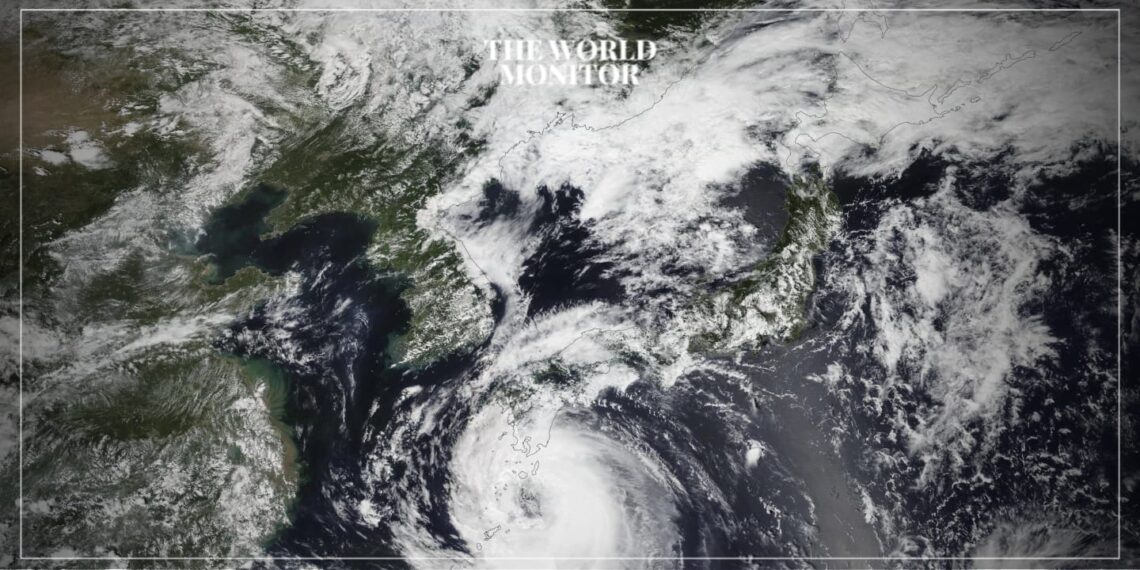Authorities announced that flights and train services had been disrupted after Typhoon Khanun triggered heavy rain in southern regions of Japan and South Korea.
They revealed that Khanun could make landfall at the southeastern South Korean port city of Tongyeong on Thursday, before tracking up the Korean peninsula.
Meanwhile, the storm is in the sea south of Kyushu, Japan’s southwestern main island some 860km (530 miles) from Tokyo, after wreaking havoc in the southwestern Okinawa region.
As of Wednesday, about 16,000 households faced power outages as heavy rain pounded Japan’s southern island of Kyushu.
The Japan Meteorological Agency (JMA) pointed out that the area was already been inundated with a month’s worth of rainfall in the past week.
The agency issued heavy rain and high wind warnings to many parts of southern and western Japan, prompting automakers including Toyota to suspend some production.
On his part, Prime Minister Fumio Kishida canceled his attendance at a ceremony on Wednesday to mark the anniversary of the atomic bombing of Nagasaki, in Kyushu.
In the same vein, South Korea issued its highest alert as Khanun forced the cancellation of nearly 80 flights and the closure of dozens of sea routes and roads.
On Tuesday, South Korean officials evacuated over 30,000 scouts from their campsite in the southwest ahead of the typhoon, the latest snag to hit the World Scout Jamboree.
President Yoon Suk Yeol ordered the authorities to prevent any further damage, especially in regions hit by last month’s torrential rain.






